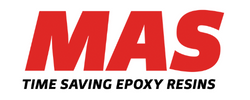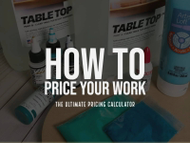How to Price Your Own Artwork and Projects
Posted by sarah@brodsolutions.com BigCommerce on Oct 3rd 2023
How to Price your Own Artwork & Projects
If you’re just starting out selling your artwork, woodworking projects or crafts, figuring out your own artist commission rates can be daunting. Don't worry though, we are here to help!
Even if you’ve been selling on a marketplace like Etsy or on an independent website for years, you can still use this guide and to make sure you’re pricing the finished project to at least cover your costs. Depending on how much profit you want to make and the market value of your project, our guide can help you get the reward you deserve for your hard work while providing you with other factors to consider when learning how to price your own artwork or custom projects.
Be sure to check out the art pricing calculator at the bottom of this page that does all the math for you!
The Basic Factors of Artist Commission Rates
It’s easy to overlook just how much time, energy and money you’ve put into a project when you’re the creator—especially if you’re used to buying art and not selling it. Here are some terms to know that will help you consider each detail of the creative process and its value:
- Cost: The amount you have to pay for something
- Material Costs: The cost of supplies used that will make up the completed product
- Overhead: A cost or expense incurred in the general upkeep or running of a plant, premises, or business, and not attributable to specific products or items
- Profit Margin: The amount by which the revenue (selling price) exceeds the cost, aka, how much money you make
Covering your Costs
The first step in figuring out what to charge for a custom piece of art or build is to cover your costs. This is the most absolute part of the pricing process and is a great place to start when determining how to price your own artwork or creative project.
Direct Material Costs
First, you’ll want to assess your direct material costs. This includes the supplies that make up the piece itself—wood, resin, etc. Hold on to your receipts and keep track of expenses from prior projects in a spreadsheet. This can help you determine the worth of one of your pieces in the future, based on how much money you have spent upfront. At first, this may seem pedantic, but soon you’ll be able to estimate lumber costs based on the size of your project in minutes!
Indirect Material Costs
You should also factor in indirect materials when considering artist commissions rates, as a buyer and a seller. These are the materials that have been used during the creative process that didn’t go into the piece itself. Examples of indirect materials include mixing sticks, buckets, pigments and other tools you might use for multiple projects. Sometimes these tools are called indirect material costs or consumables. If you only use part of something for the project, you can still factor it in. For example, tape might be used, but not a whole roll. Factoring part of the cost of the roll of tape is just fine, even if your estimation isn’t perfect.
Overhead Costs
The next consideration is overhead costs. Do you rent a space to do your work? Pay for electricity to heat it? Maybe you have a website that needs to be maintained, or you rely on expensive equipment. You can add these types of costs into your artist commission rate in advance to make sure they are being covered based on hours of usage. Another way to approach it is to ensure that overhead costs are being covered by your margin (more on that later).
When pricing your artwork, always remember to be aware that the materials you’re using aren’t the only cost you have in order to create your work! Some people might also choose to lump together indirect material costs and overhead costs when they have historical data to use.
Charging for Time
Charging for your time is extremely important when determining your rate because your time and energy arevaluable! Whether you create for fun, as a part-time or around-the-clock job, your labor hours should be considered.
There are two components to consider when charging for time: the amount of time that it takes you to complete the project and your hourly rate. Figuring out how much time a project will take can be tough in the beginning, but after creating a few projects, this will become a more straightforward part of the art pricing equation. Tracking your time can also help you keep your estimates accurate while simultaneously assisting lead times and customer expectations.
Determining a fair hourly rate is a personal question, but here are some considerations that might help you choose one:
- How much would someone else pay me to do this work?
- How much do I get paid hourly at my regular job?
- What is the minimum wage in my area?
As with overhead costs, some people choose to not include an hourly estimate in their pricing. Just make sure these costs are covered in their margin. This might be a good strategy for you if your hourly rate is tough to determine because you mass produce your art or charge such a large markup that the hourly time becomes less important. Like overhead costs, it’s an important factor to consider so you don’t finish the year and see you worked 500 hours at an hourly rate of $1.50 without realizing it.
Adding Profit
Once you tally up the costs you want to consider, you need to determine the amount of profit that you’d like to make on the piece. By adding all the costs mentioned above in advance, you can quickly see how much money you’ll actually make. Our art pricing calculator will show you different prices and profit margins on a sliding scale so you can easily compare rates and take–home pay. Choosing the markup is another personal decision that relies somewhat on gut feel.
How Do You Price Resin Art?
Like any other piece of artwork, when pricing your resin art, you want to factor in your direct, material and overhead costs, along with an hourly wage. Because epoxy and resin materials can be expensive, don’t be afraid to charge more than you would for alternative art supplies, like watercolor, acrylics or oil. Additionally, resin art can require hours of manual labor and technical skills to properly apply, so don’t be afraid to express this to your customers and price accordingly.
Other Considerations
Here are some additional things to consider when determining how to price your own artwork and custom projects. You want to make sure you cover all your bases before you give away your creation without realizing its genuine worth.
What's my experience level?
Experts can (and arguably should) charge a lot more for their pieces. Over time, quality increases, and if you gain popularity, your time might start to be fought over. If you don’t have enough time to handle all the commission requests you’re getting, it might be time for an increase in prices. Conversely, beginners might be happy to get paid at all for their work, but don’t forget to cover your costs and consider your time! Even beginners should get paid a fair price.
What price have my projects sold for in the past?
Along these same lines, you may have been charging a different amount than our art pricing calculator has projectedin the past. If it’s a lot higher, great! Start at that point and work your way up. If it’s a lot lower, now you know it’s time to work your prices up. Doing so over time might feel more comfortable for you and your customers.
What are similar pieces selling for?
Comparing your project to someone else on the market may feel weird, but it’s a great way to make sure you’re not charging way too much or way too little for your piece. Consider this after you have factored your costs and ideal profit margin.
Is this a custom piece?
Custom pieces typically cost more. Why? Because creating something that is individualized takes more time and energy. You may have to communicate with the customer more, consider them during the creative process and make tweaks if it’s not quite what they expect instead of just going with your creative flow as you normally would. Custom pieces also are tougher to find and scarcity can drive up the price.
A Note on Discounts, Incentives and Third-Party Sellers
Once you know your final price and are comfortable with it, you may want to consider adding a discount on your product in some way. Maybe it’s free shipping or a promotional sale for a holiday. These incentives can lure customers to purchase your product over someone else’s or help you turn over inventory. Just remember to either add the shipping back in with your material costs or factor the discount into the selling price to make sure it still makes sense for you.
You should also consider any charges that are incurred from the platform you sell on—for example, Etsy, Amazon, eBay. If you sell on these platforms, the final price to the customer isn’t actually your take–home pay, as they take a commission on your items sold.
Give Yourself Some Credit
Pricing your art should get a little easier every time you finish a project because you’ll slowly get better at considering every minute, material and dollar that went into your creation. Although factoring in every aspect of your artist commission rates can be time-consuming and somewhat overwhelming, you deserve to be fairly rewarded for the hard work you’ve put in.
Whether you’re a beginner or novice, give yourself some credit for creating something new and sharing it with the outside world. If you need more assistance when determining how to price your own artwork, check out the rest of our calculators—including ones that tell you how much resin you’ll need for your project.
Project Pricing Guide
What do the materials cost?
Additional (1,2,3) could be mixing cups, miscellaneous (i.e. sand, pebbles, etc) , specialty tools that need to be purchased for this job (expense the entire item or partial) or offerings like free shipping on your product.
Total Cost of Materials
$
Labor
Labor Total
$
Total Project Cost
Materials Total
$
Labor Total
$
Total Cost
$
Project Cost
$
Profit Markup
$
Total Sales Price
$

